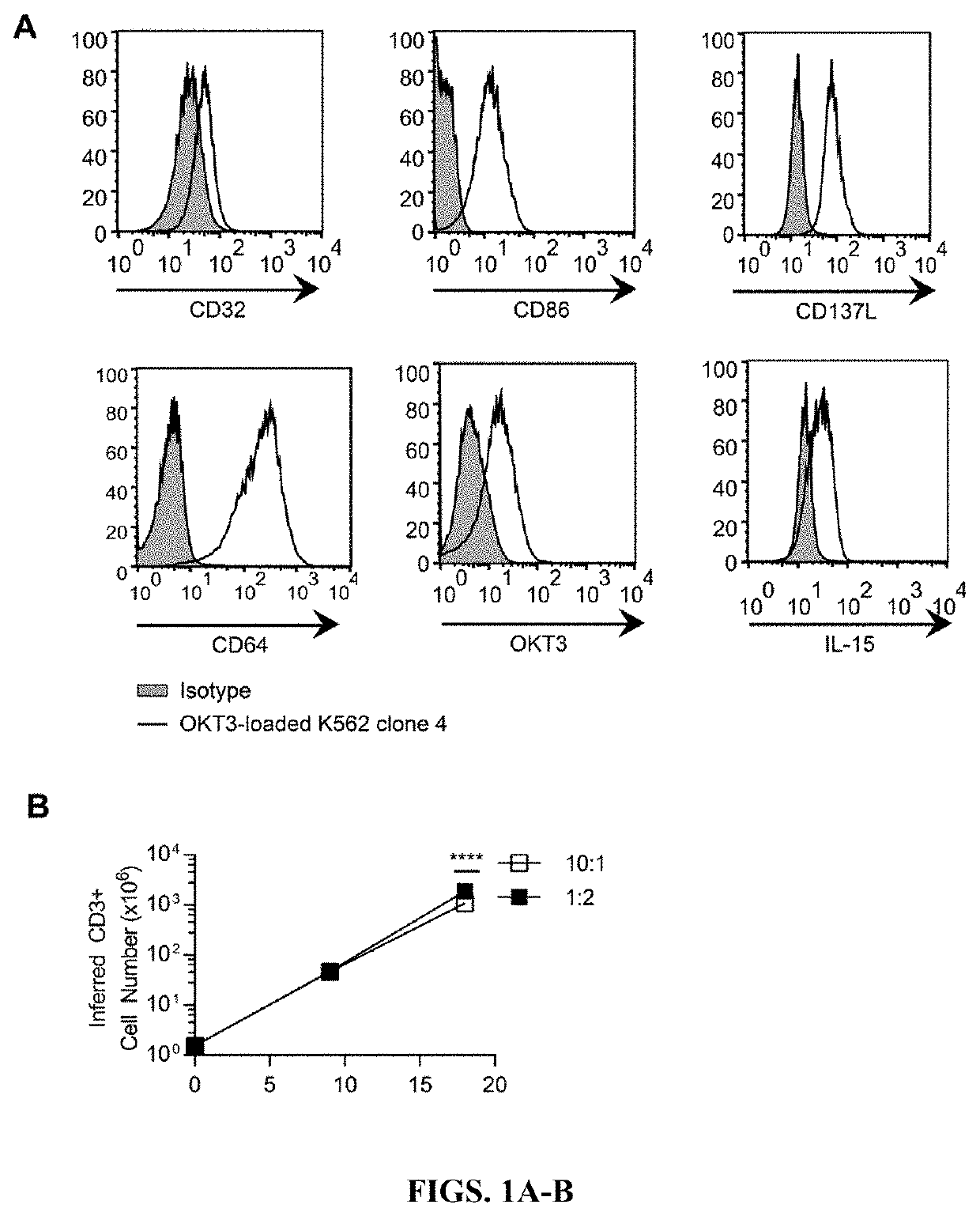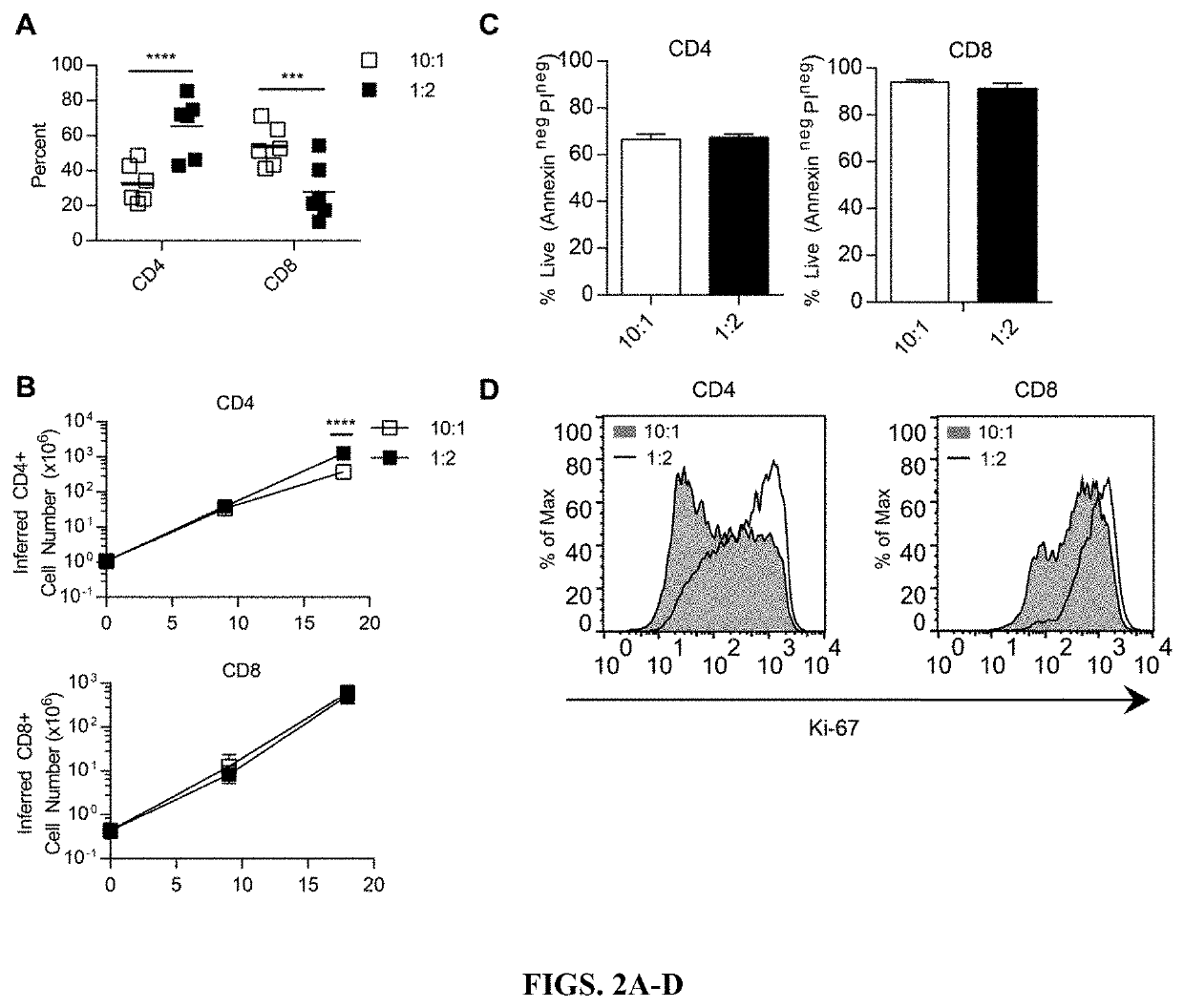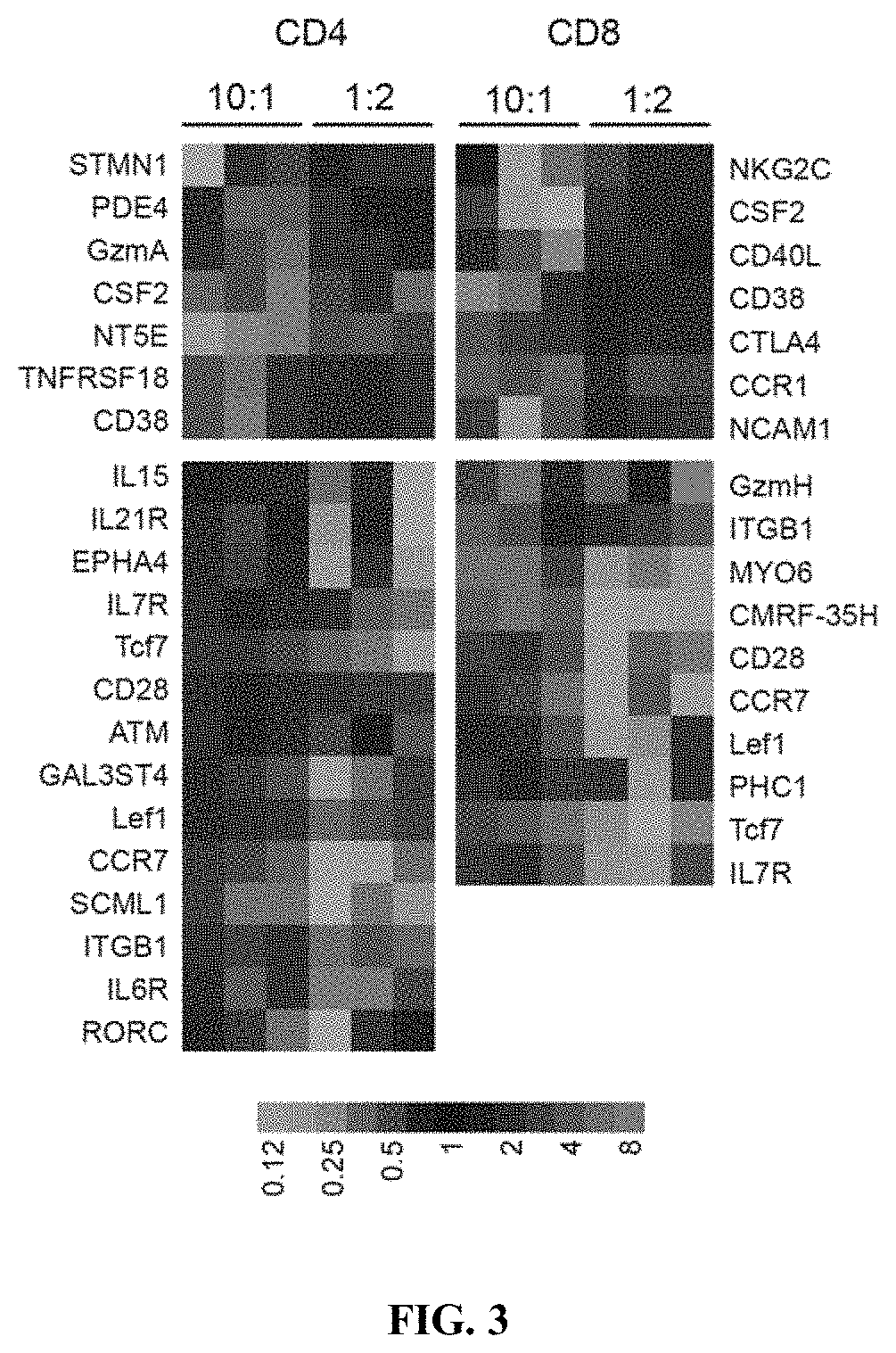Chimeric antigen receptors (CAR) and methods for making and using the same
a technology of chimeric antigen receptors and receptors, applied in the field of immunotherapy, can solve the problems of high cost of applicability, although compliant with current good manufacturing practice, and achieve the effect of reducing off-target cytotoxicity of cells and facilitating cell targeting
- Summary
- Abstract
- Description
- Claims
- Application Information
AI Technical Summary
Benefits of technology
Problems solved by technology
Method used
Image
Examples
example 1
and Methods
[0158]Plasmids
[0159]Cetuximab-derived CAR transposon. Cetuximab-derived CAR is composed of the following: a signal peptide from human GMCSFR2 signal peptide (amino acid 1-22; NP_758452.1), variable light chain of cetuximab (PDB:1YY9_C) whitlow linker (AAE37780.1), variable heavy chain of cetuximab (PDB:1YY9 D), human IgG4 (amino acids 161-389, AAG00912.1), human CD28 transmembrane and signaling domains (amino acids 153-220, NP_006130), and human CD3-ζ intracellular domain (amino acids 52 through 164, NP_932170.1). Sequence of GMCSFR2, variable light chain, whitlow linker, variable heavy chain and partial IgG4 were human codon optimized and generated by GeneART (Regensburg, Germany) as 0700310 / pMK. Previously described CD19CD28mZ(CoOp) / pSBSO under control of human elongation factor 1-alpha (HEF1α) promoter was selected as backbone for SB transposon. 0700310 / pMK and previously described CD19CD28mZ / pSBSO (93, 94) underwent double digestion with NheI and XmnI restriction enzy...
example 2
xpansion of T Cells by Artificial Antigen Presenting Cells Loaded with Anti-CD3
[0245]Antigen-dependent stimulation through stable CAR expression achieved by DNA integration can be used to numerically expand CAR+ T cells to clinically feasible numbers. The transient nature of CAR expression via RNA transfer requires numeric expansion of T cells to clinically feasible numbers to be achieved prior to RNA transfer of CAR. To determine the ability of aAPC to numerically expand T cells independent of antigen, anti-CD3 (OKT3) was loaded onto K562 via stable expression of the high affinity Fc receptor CD64 (FIG. 1A). K562 also expressed CD86, 41BB-L, and a membrane bound IL-15 for additional T-cell costimulation. To determine the impact of aAPC density in co-culture to stimulate T cell expansion, peripheral blood mononuclear cells (PBMC) derived from healthy human donors were co-cultured with γ-irradiated aAPC at low density, 10 T cells to 1 aAPC (10:1), or high density, 1 T cell to 2 aAPC ...
example 3
xpanded with Lower Density aAPC Demonstrate a More Memory-Like Phenotype than T Cells Expanded with Higher Density aAPC
[0247]To determine if expansion with low density or high density aAPC impacted T-cell phenotype, expression of a panel of mRNA transcripts (Lymphocyte-specific CodeSet) was analyzed by multiplex digital profiling using nCounter analysis (Nanostring Technologies, Seattle, Wash.). Significant differential gene expression was determined by a p+ or CD8+ T cells expanded with low density (10:1 T cell:aAPC) or high density (1:2 T cell:aAPC) aAPC. CD4+ and CD8+ T cells expanded with high density aAPC demonstrated increased expression of genes associated with T-cell activation, such as CD38 and granzyme A in CD4+ T cells and CD38 and NCAM-1 in CD8+ T cells (FIG. 3). In contrast, CD4+ and CD8+ T cells expanded with low density aAPC showed increased expression of genes associated with central memory or naïve T cells, including Wnt signaling pathway transcription factors Lef1 ...
PUM
| Property | Measurement | Unit |
|---|---|---|
| OD | aaaaa | aaaaa |
| OD | aaaaa | aaaaa |
| humidity | aaaaa | aaaaa |
Abstract
Description
Claims
Application Information
 Login to View More
Login to View More - R&D
- Intellectual Property
- Life Sciences
- Materials
- Tech Scout
- Unparalleled Data Quality
- Higher Quality Content
- 60% Fewer Hallucinations
Browse by: Latest US Patents, China's latest patents, Technical Efficacy Thesaurus, Application Domain, Technology Topic, Popular Technical Reports.
© 2025 PatSnap. All rights reserved.Legal|Privacy policy|Modern Slavery Act Transparency Statement|Sitemap|About US| Contact US: help@patsnap.com



